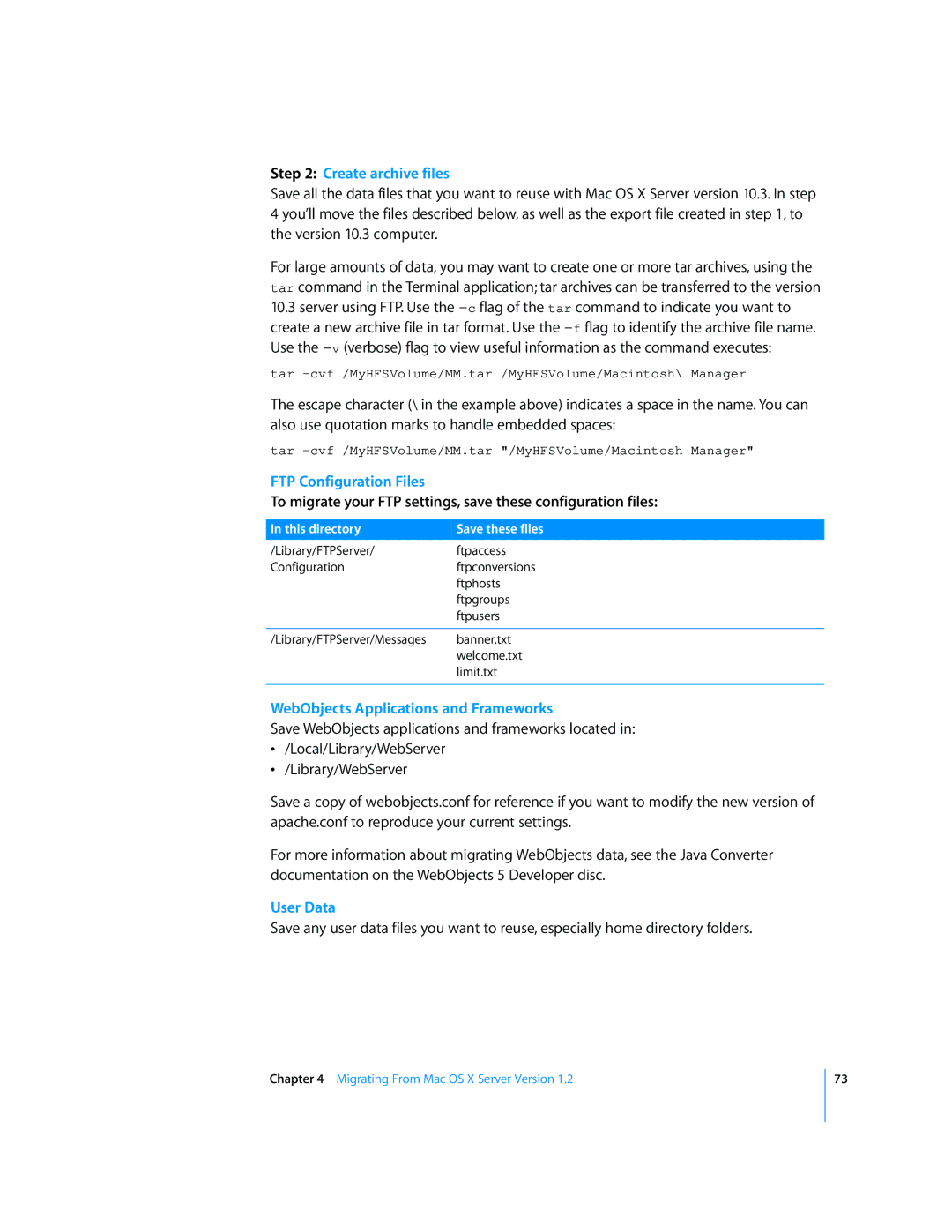
Step 2: Create archive files
Save all the data files that you want to reuse with Mac OS X Server version 10.3. In step 4 you’ll move the files described below, as well as the export file created in step 1, to the version 10.3 computer.
For large amounts of data, you may want to create one or more tar archives, using the tar command in the Terminal application; tar archives can be transferred to the version
10.3server using FTP. Use the
tar
The escape character (\ in the example above) indicates a space in the name. You can also use quotation marks to handle embedded spaces:
tar
FTP Configuration Files
To migrate your FTP settings, save these configuration files:
In this directory | Save these files |
/Library/FTPServer/ftpaccess
Configurationftpconversions ftphosts ftpgroups ftpusers
/Library/FTPServer/Messages banner.txt welcome.txt limit.txt
WebObjects Applications and Frameworks
Save WebObjects applications and frameworks located in:
•/Local/Library/WebServer
•/Library/WebServer
Save a copy of webobjects.conf for reference if you want to modify the new version of apache.conf to reproduce your current settings.
For more information about migrating WebObjects data, see the Java Converter documentation on the WebObjects 5 Developer disc.
User Data
Save any user data files you want to reuse, especially home directory folders.
Chapter 4 Migrating From Mac OS X Server Version 1.2
73
